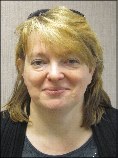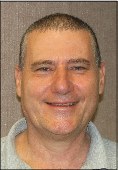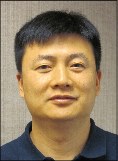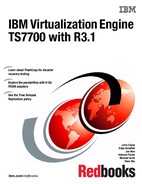Preface
This IBM® Redbooks® publication highlights TS7700 Virtualization Engine Release 3.1. It is intended for system architects who want to integrate their storage systems for smoother operation. The IBM Virtualization Engine TS7700 offers a modular, scalable, and high-performing architecture for mainframe tape virtualization for the IBM System z® environment. It integrates 3592 Tape Drives, high-performance disks, and a new disk cache subsystem into a storage hierarchy. This storage hierarchy is managed by robust storage management firmware with extensive self-management capability. It includes the following advanced functions:
•Policy management to control physical volume pooling
•Cache management
•Redundant copies, including across a grid network
•Copy mode control
The TS7700 Virtualization Engine offers enhanced statistical reporting. It also includes a standards-based management interface for TS7700 Virtualization Engine management.
The new IBM Virtualization Engine TS7700 Release 3.1 continues the next generation of TS7700 Virtualization Engine servers for System z tape:
•IBM Virtualization Engine TS7720 Server Model VEB with 3956-CS9 and 3-TB SAS drives with RAID 6 protection
•IBM Virtualization Engine TS7740 Server Model V07 with 3956-CC9 with 600-GB SAS drives with RAID 6 protection
These Virtualization Engines are based on IBM POWER7® technology. They offer improved performance for most System z tape workloads compared to the first generation of TS7700 Virtualization Engine servers.
TS7700 Virtualization Engine Release 3.1 builds on the existing capabilities of the TS7700 family. It also introduces the following capabilities:
•8-Gb IBM FICON® adapters for host attachment
•Up to eight FICON channel host attachments, doubling the previous number of channels available
•Up to 512 logical path definitions per FICON channel, doubling the previous number of logical paths per channel
•IBM FlashCopy® for disaster recovery testing
•Support for a second TS7720 expansion frame attached to a TS7720 system for a total TS7720 system capacity up to 1 PB before compression
•New Time Delayed Copy policy
Summary of contents
This book contains valuable information about the TS7700 Virtualization Engine for anyone interested in this product. The following summary helps you understand the structure of this book and to decide which of the chapters are of the most interest.
In addition to the material in this book, other IBM publications are available to help you better understand the TS7700 Virtualization Engine. This information is part of this book.
If you have limited knowledge of the TS7700 Virtualization Engine, see the IBM Virtualization Engine TS7700 Customer Information Center:
If you have more knowledge, a series of technical documents and white papers describing many aspects of the TS7700 Virtualization Engine are available. Although the basics of the product are described in this book, more detailed descriptions are provided in these documents. For that reason, most of these detailed record descriptions are not in this book, although you are directed to the appropriate technical document. For these additional technical documents, go to IBM Techdocs and search for TS7700:
For a short description of all available technical documents, see “Technical documents on the IBM Techdocs website” on page 916.
Familiarize yourself with the contents of Chapter 1, “Introducing the IBM Virtualization Engine TS7700” on page 3, Chapter 2, “Architecture, components, and functional characteristics” on page 13, and Chapter 3, “TS7700 usage considerations” on page 89. These chapters provide a functional description of all major features of the product, and they are a prerequisite for understanding the other chapters.
If you are planning for the TS7700 Virtualization Engine, see Chapter 4, “Preinstallation planning and sizing” on page 105. If you already have a TS7700 Virtualization Engine or even a 3494 Virtual Tape Server (VTS) installed, see Chapter 6, “Hardware configurations and upgrade considerations” on page 187. Chapter 5, “TS7700 implementation” on page 171 describes the hardware implementation.
Chapter 5, “TS7700 implementation” on page 171 describes the major software considerations for the TS7700 Virtualization Engine. For more information about software, see Chapter 4, “Preinstallation planning and sizing” on page 105, and Chapter 7, “Migration” on page 239.
Chapter 8, “Operation” on page 277 provides the operational aspects of the TS7700 Virtualization Engine. This information includes the layout of the Management Information windows to help with daily operational tasks.
If you have a special interest in the performance and monitoring tasks as part of your operational responsibilities, see Chapter 9, “Performance and monitoring” on page 589. Although this chapter gives a good overview, more information is available in the technical documents on the Techdocs website.
For availability and disaster recovery specialists, and those individuals who are involved in the planning and operation related to availability and disaster recovery, see Chapter 10, “Disaster recovery” on page 685.
In addition, the following appendixes conclude this book:
•Appendix A, “Feature codes” on page 779 describes all the features available for the TS7700 Virtualization Engine.
•Appendix B, “IBM Virtualization Engine TS7700 Implementation for z/VM, z/VSE, TPF, and z/TPF” on page 787 gives a short overview and scheme for the TS7700 implementation.
•Appendix C, “JES3 examples and information” on page 803 provides additional information to assist you if you are running an IBM z/OS® system with JES3.
•Appendix D, “DEVSERV QLIB command” on page 823 gives you the layout of the new command that can be helpful with the TS7700 configuration in z/OS.
•Appendix E, “Sample JCL” on page 827 gives you examples of jobs that are needed to perform installation and operational tasks.
•Appendix F, “Library Manager volume categories” on page 851 gives you a full list of all category codes that are used in both the TS7700 and the 3494 VTS.
•Appendix G, “TS7700 parameter examples” on page 861 provides parameter examples in different grid configurations.
•Appendix H, “Extra IODF examples” on page 879 gives IODF and IOCP examples.
•Appendix I, “Case study for logical partitioning of a two-cluster grid” on page 893 provides a scenario about a partitioned TS7700 hardware configuration.
Authors
This book was produced by a team working at the International Technical Support Organization, Tucson Center.

|
Larry Coyne is a Project Leader at the International Technical Support Organization, Tucson, Arizona, center. He has 29 years of IBM experience, with 23 years in IBM storage software management. He holds degrees in Software Engineering from the University of Texas at El Paso and Project Management from George Washington University. His areas of expertise include client relationship management, quality assurance, development management, and support management for IBM Tivoli® Storage Software.
|

|
Katja Denefleh works in the Advanced Technical Skill group in Germany. She is responsible for providing second-level support for high-end tape products for Europe, the Middle East, and Africa. Katja has worked more than 15 years as a System z Systems Programmer, and more than 10 years as a Mainframe Architect for outsourcing clients. Her areas of expertise cover all System z hardware, IBM Parallel Sysplex®, and operations aspects of large mainframe installations. Before joining IBM in 2003, she worked for companies using IBM systems and storage in Germany.
|

|
Joe Hew works in the product field engineering group supporting the IBM TS7700 Virtualization Engine. With many years in the IT field, Joe has worked in system-level test working on various products, such as storage controllers, tape libraries, adapters, Serial Storage Architecture (SSA), and storage area networks. Joe is a Microsoft Certified Professional and a Certified Level 2 Fibre Channel Practitioner (awarded by the Storage Networking Industry Association).
|

|
Aderson Pacini works in the Tape Support Group in the IBM Brazil Hardware Resolution Center. He is responsible for providing second-level support for tape products in Brazil. Aderson has extensive experience servicing a broad range of IBM products. He has installed, implemented, and supported all the IBM Tape Virtualization Servers from the VTS B16 to the TS7700 Virtualization Engine. Aderson joined IBM in 1976 as a Service Representative and his entire career has been in IBM Services.
|

|
Michael Scott is a Senior DFSMS Technical Support Engineer in the IBM Systems & Technology Group, Client Enablement & Systems Assurance team. He has 16 years of experience in DFSMS technical support. He holds a Masters in Business Administration and a Bachelor of Sciences in Mathematics. Michael has six patents issued in the computer sciences field and is a DFSMS Technical Advocate. He is the current team lead for the DFSMS technical support education program.
|

|
Chen Zhu is a Consulting System Service Representative at the IBM Global Technology Services® in Shanghai, China. He joined IBM in 1998 to support and maintain System z products for clients throughout China. Chen has been working in the Technical Support Group (TSG) providing second-level support to System z clients since 2005. His areas of expertise include System z hardware, IBM Parallel Sysplex, IBM Tape Library, and IBM FICON connectivity.
|
Thanks to the following people for their contributions to this project:
Norbert Schlumberger
IBM SO Delivery, Server Systems Operations
IBM SO Delivery, Server Systems Operations
Felipe Barajas
Wayne Carlson
Erika Dawson
Lawrence M. (Larry) Fuss
Charles House
Katsuyoshi Katori
Harold Koeppel
Khanh Ly
Takeshi Nohta
Sam Smith
Joe Swingler
IBM System and Technology Group
Wayne Carlson
Erika Dawson
Lawrence M. (Larry) Fuss
Charles House
Katsuyoshi Katori
Harold Koeppel
Khanh Ly
Takeshi Nohta
Sam Smith
Joe Swingler
IBM System and Technology Group
Randy Hensley
IBM Sales and Distribution, Technical Sales Support
IBM Sales and Distribution, Technical Sales Support
Thanks to the authors of the previous editions of this book.
•Authors of the prior edition, IBM Virtualization Engine TS7700 with R3.0, published in October 2013:
Larry Coyne
Katja Denefleh
Joe Hew
Rex Newton
Aderson Pacini
David Reich
Chen Zhu
Katja Denefleh
Joe Hew
Rex Newton
Aderson Pacini
David Reich
Chen Zhu
Now you can become a published author, too!
Here’s an opportunity to spotlight your skills, grow your career, and become a published author—all at the same time! Join an ITSO residency project and help write a book in your area of expertise, while honing your experience using leading-edge technologies. Your efforts will help to increase product acceptance and customer satisfaction, as you expand your network of technical contacts and relationships. Residencies run from two to six weeks in length, and you can participate either in person or as a remote resident working from your home base.
Find out more about the residency program, browse the residency index, and apply online at:
Comments welcome
Your comments are important to us!
We want our books to be as helpful as possible. Send us your comments about this book or other IBM Redbooks publications in one of the following ways:
•Use the online Contact us review Redbooks form found at:
•Send your comments in an email to:
•Mail your comments to:
IBM Corporation, International Technical Support Organization
Dept. HYTD Mail Station P099
2455 South Road
Poughkeepsie, NY 12601-5400
Dept. HYTD Mail Station P099
2455 South Road
Poughkeepsie, NY 12601-5400
Stay connected to IBM Redbooks
•Find us on Facebook:
•Follow us on Twitter:
•Look for us on LinkedIn:
•Explore new Redbooks publications, residencies, and workshops with the IBM Redbooks weekly newsletter:
•Stay current on recent Redbooks publications with RSS Feeds:
..................Content has been hidden....................
You can't read the all page of ebook, please click here login for view all page.
